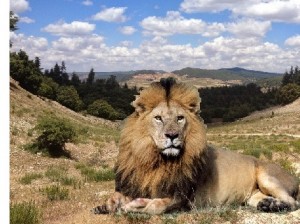A new study by Lehocká et al (2021) published right at the end of December 2021 in PLos ONE focuses attention back on the Moroccan Royal Lion population. Previous studies provided data on the Moroccan Royal lions which has now been examined further in this interesting analysis of the captive population of animals that are descendants of the King of Morocco’s collection.
As this blog has repeatedly stated, these lions, now mostly scattered across European zoos as well as a significant group still in Rabat Zoo, Morocco, are a potentially very important remnant of the North African lion population. In contemporary terms we should see these as being part of the wider Northern lion subspecies Panthera leo leo (range India, Middle East North Africa , West Africa, Central Africa).
Fig 1 Diagram showing the structure of the pedigree file based on Wright’s fixation index (FST) from Lehocká et al (2021) showing relations between captive ‘Morocccan Royal lions’, defined by the location of individuals in zoological gardens, showing three main groups.
The PLoS ONE paper highlights that the effective population size of this wider group (of just under 100 animals) is only 14.
Continuous monitoring of the genetic diversity of the ‘Moroccan Royal lion’ group is required, especially for long-term conservation management purposes, as it would be an important captive group should further DNA studies establish an affinity to P. leo leo.
Further Reading
Lehocká, K., Black, S. A., Harland, A., Kadlečík, O., Kasarda, R., & Moravčíková, N. (2021). Genetic diversity, viability and conservation value of the global captive population of the Moroccan Royal lions. PloS one, 16(12), e0258714.



